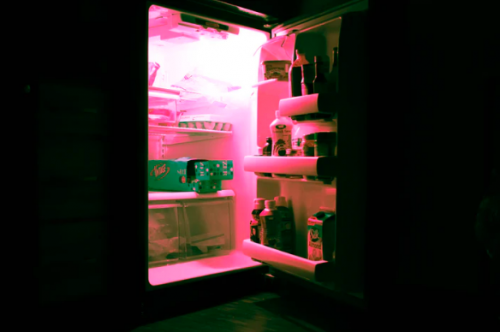Image courtesy of Ernest Brillo
In the early nineteenth century, an English scientist reported that releasing stretched rubber bands could make them a few degrees cooler. While the idea of elastic cooling was novel at the time, it was overshadowed by vapor-compression methods that would eventually form the basis of modern refrigerator technology. However, a team of researchers led by Ray Baughman of UT Dallas and Zunfeng Liu of Nankai University recently discovered that they could use rubber fibers to make fridges even more efficient than their vapor-compression counterparts by adding an extra step: twist.
Baughman and his colleagues first came across twist-based cooling while using coiled fishing line to make artificial muscles. They realized that the energy absorbed by these fibers during the untwisting process could be harnessed not only for mechanical purposes, but also for thermal cooling. Since then, they have found that other kinds of fiber can produce even greater temperature changes when untwisted—a natural rubber fiber can decrease its maximum surface temperature by 15.5°C, and a nickel-titanium wire can decrease its maximum surface temperature by 17.0°C. “Everything from the very beginning was unexpected,” Baughman said.
According to Baughman, the temperature changes in the fibers occur because of changes in entropy—a measure of disorder in any system. When the fibers are twisted, their polymer chains form helices, moving from a high-entropy to low-entropy state. This change in entropy requires work and releases heat into the environment. Conversely, untwisting the fibers restores the polymer chains to their disordered state, which requires them to extract heat from their immediate surroundings. Because the polymers near the surface of a twisted fiber have a more helical configuration than those in the core, the outside of the fiber experiences a greater degree of cooling during untwist.
The researchers found that they could increase this cooling effect by releasing stretch after untwisting. Elastocaloric cooling also operates through changes in entropy—relaxing a rubber band brings its polymer chains to a higher entropy state and cools the surrounding environment. In combining the two processes, the scientists were able to maximize the increase in entropy and thus maximize cooling. However, they came across a surprising finding: twisted fiber has a natural tendency to coil in the same direction as the twists, but coiling the twisted fiber in the opposite direction reverses the temperature changes caused by stretch and stretch release, resulting in a material that has the strange property of cooling when stretched.
Not only is releasing twist a more effective form of cooling than releasing stretch alone—the maximum change in surface temperature of a twisted and stretched natural rubber fiber was 5.4 times that of the untwisted fiber—but twisted fibers are also more compact than stretched ones. Using these rubber fibers, the researchers demonstrated that a twist-based cooler could be two-sevenths the length of a stretch-based cooler while still providing 2.3°C greater average surface cooling. By flowing a stream of water over three twisted nickel-titanium wires while unplying them, they were able to transmit the surface cooling of the wires to the water, decreasing its temperature by up to 7.7°C in one cycle. This process could be repeated over many cycles of twisting and untwisting to create a steady supply of cooled water.
Having filed a patent on their findings, Baughman and his team are now working to commercialize this technology. Given that typical vapor-compression refrigerators are not optimally efficient and often use chemicals that contribute to global warming, twist-based cooling could be a significant step towards environmentally sustainable refrigeration. “In practical devices, we expect to be able to exceed the efficiency of a conventional refrigerator,” Baughman said. “We want to make refrigerators cheaper, smaller, and lighter.”
Because of the variety of fibers that change temperature with twist, their discovery could have many applications beyond traditional refrigeration, such as cooling circuit boards and other small electronic devices. Baughman’s team has even demonstrated that the fibers could be coated with thermochromic paint to create mechanical strain sensors and fabrics for color-changing clothing. It remains to be seen how exactly this technology will be commercialized over the next few years, but there will certainly be exciting twists to come.
Sources:
Baughman, R., Liu, Z., Wang, R., et. al (2019). Torsional refrigeration by twisted, coiled, and supercoiled fibers. Science, 366(6462), 216–221.
Baughman, R. (2019, October 28). Phone interview with M. Zhu.
Roundy, D., & Rogers, M. (2013). Exploring the thermodynamics of a rubber band. American Journal of Physics, 81(20), 20–23.

